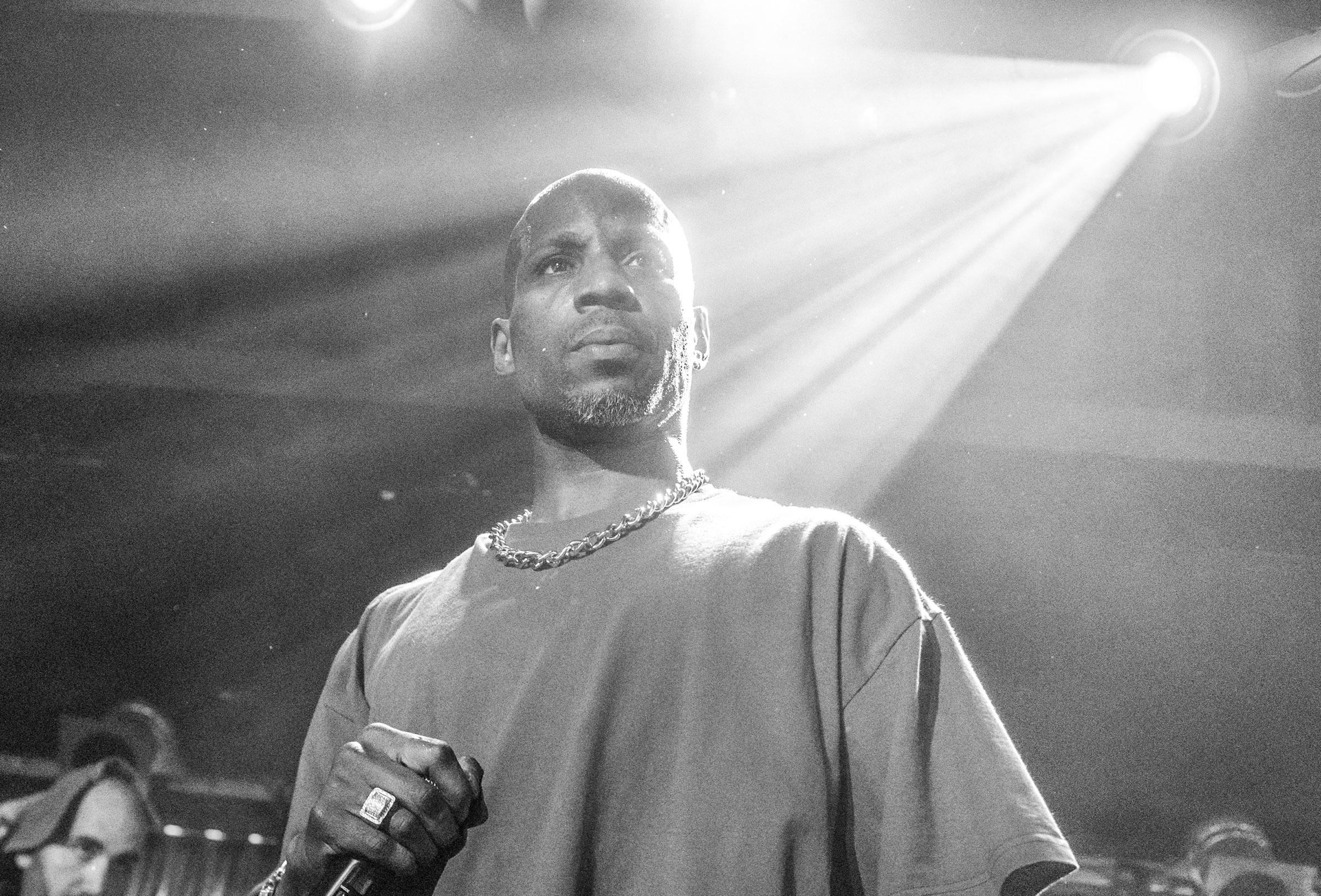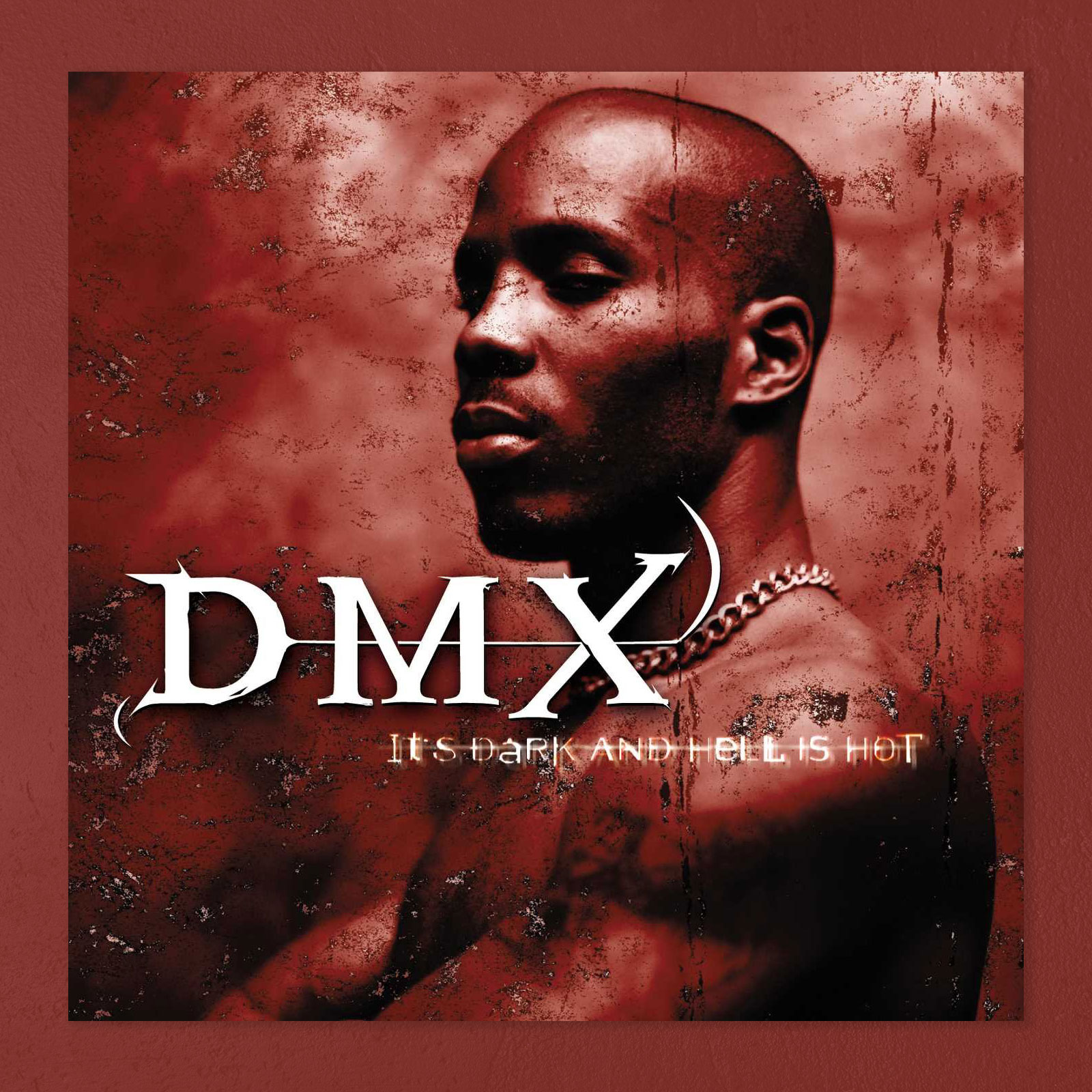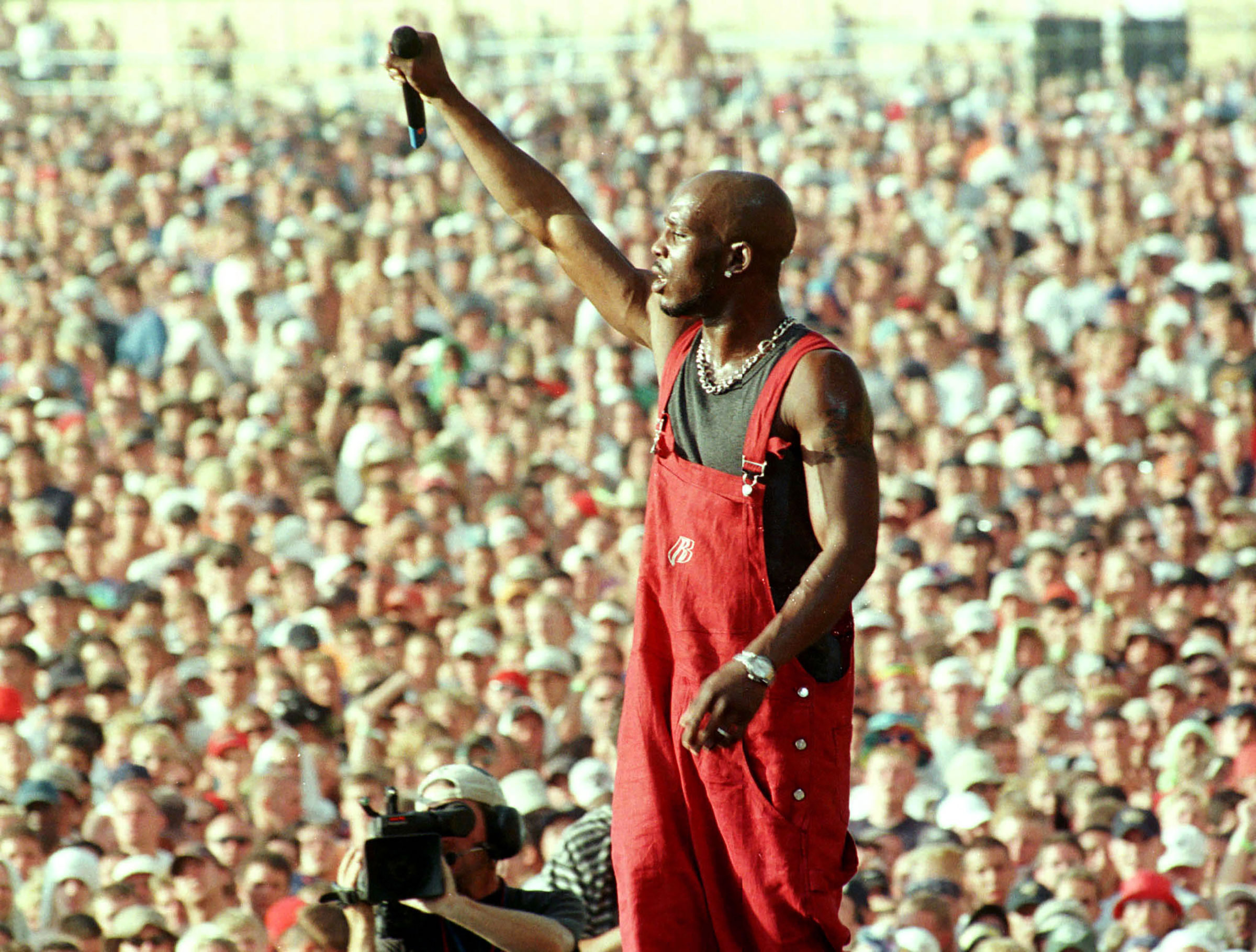
In early 1998, few could have predicted that a rugged battle rapper from Yonkers was about to take over hip-hop. At the time, Puff Daddy and Bad Boy Records held court over the airwaves with lush production and silk Versace suits. Their debonair, celebratory approach to the genre was tailor-made for mass consumption, allowing them to churn out hit after hit.
Then 27-year-old Earl Simmons, better known as DMX, released his debut album It’s Dark and Hell Is Hot, and everything changed. The album was full of violent nihilism, hair-raising tales of betrayal and revenge, and his emulations of dogs barking and whining; the beats were rugged and skeletal. Rather than being rejected or pigeonholed, the album immediately skyrocketed to the top of the charts, selling 251,000 copies in its first week in the U.S as songs like “Ruff Ryders’ Anthem” rang out of every car stereo in New York City and beyond.
“That was the year DMX took over the world,” Nas reminisced in 2013 about the rapper, who died on April 9 at 50. Just seven months later, DMX would return with Flesh of My Flesh, Blood of My Blood, which made him the only living rapper to top the Billboard album charts twice in the same year. (Future would replicate the feat in 2017.) By abrasively challenging the slickness of rap’s assimilation into the mainstream, DMX had unwittingly become one of the biggest rappers in the world.
It would have been nearly impossible for anyone to sustain such meteoric highs. Over the next two decades, DMX would produce towering hits like “X Gon’ Give It To Ya” and “Party Up” while also running into legal troubles and substance abuse issues and spending several stints in prison. A week after he suffered from a heart attack earlier this month, DMX died in a White Plains hospital. When he was hospitalized, the Ruff Ryders, his hip-hop collective, gathered in person outside the hospital, and countless artists and cultural figures paid their respects on social media.
Few who were hip-hop fans in 1998 can forget the enormous impact of It’s Dark and Hell Is Hot. And the album’s legacy continues to reverberate with a new generation of artists two decades later. Here are the ways that It’s Dark and Hell Is Hot irrevocably changed the hip-hop landscape.

Kickstarting a New Era of New York Hip-Hop
It’s difficult to overstate how popular Puff Daddy was before DMX’s arrival. Following the death of the icons Tupac Shakur and the Notorious B.I.G., Combs was almost single-handedly responsible for hip-hop’s “shiny suit era,” in which big-budget videos, lavish party-throwing, and dancefloor-ready music seemed like prerequisites to commercial success. The American public embraced Combs’ vision of excess to the fullest, with the blog Billboard Chart Rewind later writing that “Bad Boy Records took over the charts in 1997 similar[ly] to The Beatles’ domination in 1964.”
At that time, Puff Daddy himself had no interest in signing DMX: “His voice is too rough, he’s not marketable,” DMX later recalled Puff Daddy saying. DMX kicked around the underground and battle rap circuits for several years before signing with Def Jam. And when the label began planning his debut album rollout, they hooked up him with Hype Williams, the music video director who had presided over perhaps the pinnacle of the “shiny suit” era: Mase’s “Feel So Good” video.
But rather than fold DMX into that aesthetic, the pair went in the opposite direction. For “Get At Me Dog,” Williams filmed DMX in a grimy live performance at the famed Manhattan hip-hop club The Tunnel. DMX, bare chested, scowls and barks into the camera, which captures the scene through a stark gray-white thermal camera lens; you can practically feel the sweat of the raucous, packed-in crowd. “Let’s take it back to the streets, motherf—ers!,” DMX shouts raspily at the beginning of the video, as if he already understood the sea change that was about to happen.
“It was a complete 180,” Lowkey, a radio show host on Apple Music, tells TIME. “Puff was controlling the clubs; you were watching Bad Boy Records pop bottles, wear Rolexes, Jesus pieces, Coogi sweaters. Then here comes this crazy energetic figure from Yonkers with the Timbs and the bandanas, running around with pitbulls, giving a perspective on the streets that a lot of people weren’t familiar with and taking command of what hip-hop didn’t look like.”
The rest of It’s Dark and Hell is Hot solidified his transformative nature. DMX’s battle rapping prowess was readily apparent on confrontational anthems like “F—in’ wit’ D,” and he animated his years of trauma—childhood abuse, homelessness, frequent trips to the hospital due to his asthma and stints in jail—with a mesmerizing fury. But the album wasn’t solely expulsions of rage: he showed his versatility in flow and content in songs like “Look Through My Eyes,” a wrenching ballad plumbing his past, and “Prayer,” an a capella sermon delving into his relationship with God.
It’s Dark and Hell is Hot would set a template for a new crop of hungry New York crews to embrace epic streetwise narrative storytelling. A new golden era of New York hip-hop would be marked first by DMX’s own Ruff Ryders’ crew—which included Eve, Jadakiss, and a young producer named Swizz Beatz (more on him later)—as well as 50 Cent’s G-Unit and Cam’ron’s Diplomats. “DMX is one of the forefathers to allow people to be honest and unapologetic,” Lowkey says. “Ruff Ryders have a huge influence on what G-Unit, Diplomats, Roc-A-Fella did and how they wanted to show their environments from their eyes; it allowed them to speak their truth.”

Horrorcore and Alter Egos
As DMX was shifting the genre’s aesthetic priorities, he was also bending conventions of form and subgenre. Lyrics on It’s Dark and Hell is Hot made many listeners squirm, especially the ghastly “X-Is Coming,” in which he adapts Freddie Krueger’s nursery rhyme from A Nightmare On Elm Street. DMX was by no means the first to incorporate horrorcore into rap; the Geto Boys had notably perfected pushing the bounds of ghastly narrative on songs like “Mind Playing Tricks on Me” in 1991.
But DMX’s bestselling tales of murder brought the horrorcore genre, which originated in the 1980s, to a much wider audience, and paved the way for future eye-bulging experimentations; two years later, Eminem would win best rap album at the Grammys for The Slim Shady LP, on which he tells the story of disposing of his girlfriend’s corpse. Eleven years after that, Tyler the Creator would come to the fore with “Yonkers,” a song named after DMX’s hometown; in the song’s black-and-white video, Tyler eats a cockroach, vomits and then hangs himself.
While some were repulsed by DMX’s content, it’s clear from listening to the album that he was exploring the depths of his despairing mental state and the corrosive impacts of poverty. Another groundbreaking tool he used to bring those explorations into human psychology to life was the use of alter egos, all of whom he voiced. On “Damien,” he voices a Satanic figure coaxing him into amoral decisions; on “Stop Being Greedy,” he voices both an impoverished man trying to make an honest living and the monster within him. (Producer Dame Grease later said that DMX did all the voices of “Damien” in one take.)
This approach would have a huge impact on one of the most important voices of a future generation: Kendrick Lamar. “Thank God for the album I idolized / It’s Dark and plus Hell is Hot, that’s the start of this crazy ride,” Lamar rapped on his song The Heart Pt. 3 in 2012. His Good Kid, m.A.A.d City told a similar arc of trying to find salvation amid terror and violence; and To Pimp a Butterfly relies heavily on a Damien-like persona named Lucy.
The Rise of Swizz Beatz
While most of It’s Dark and Hell Is Hot was produced by Dame Grease or PK, DMX also took a chance on a teenager who was anxious to carve out a name for himself: Swizz Beatz. Swizz Beatz later said that at the time, no one was taking him seriously as producer: “‘You DJ, stick to DJing,’” he recalled being told, in a 2011 interview.
But his beat for “Ruff Ryders’ Anthem” would end up being the backbone of one of DMX’s most beloved and anthemic songs—and he would end up producing the majority of DMX’s next no. 1 album, Flesh of My Flesh, Blood of My Blood. From there, Swizz Beatz would carve out a central place in hip-hop as one of its foremost stylists, with his signature sparse, synth-driven sound propelling everyone from Jay-Z to Beyoncé to Kanye West. Currently, Swizz has embraced the role as a keeper of hip-hop history: his Verzuz series, which he created with Timbaland last year, has functioned as something like a hip-hop museum and reinvigorated interest in decades of classic music. In July, he featured DMX on an episode with Snoop Dogg, which racked up more than 500,000 concurrent viewers.
New Generations
Meanwhile, DMX continues to be honored by a younger generation whose members may not have been old enough to fully appreciate It’s Dark and Hell is Hot upon its release. Drake interpolated “How’s It Going Down” on his 2016 song “U With Me,” calling DMX personally to ask for his permission. Skepta quoted “Damien” in A$AP Rocky’s 2019 song “Praise The Lord (Da Shine),” rapping, “I listened to X, I peeped the bars/ The snakes, the rats, the cats, the dogs.” A$AP Ferg and A$AP Rocky sampled “Get At Me Dog” on their 2019 single “Pups,” while Pop Smoke growled frequently on his breakout EP “Meet the Woo.” (For what it’s worth, even Lin-Manuel Miranda interpolated him in Hamilton for the chorus of “Meet Me Inside.”)
Rapper Denzel Curry was just three when It’s Dark and Hell is Hot came out, but now lists it as one of his favorite albums. “If you want to rap, if you want to know how to make really good songs, you have to listen to that record,” he says. “From the lyrical stuff to the melodic stuff to the criminal stuff, the hard-hitting stuff, he had everything. And it was all real; it was him. He gave his life on those records.”
Curry has received comparisons to DMX across his career—and perhaps most notably on the 2020 song “DIET_,” in which he slowly revs up his voice until he reaches a terrifyingly raspy DMX-like flow: “GET MONEY FROM A SHOW THEN DEPOSIT IT!” “That’s definitely what I am going for: The originator of that aggressive style is DMX,” he says. “DMX had a huge impact on my life and my musical career.”
More Must-Reads from TIME
- Cybersecurity Experts Are Sounding the Alarm on DOGE
- Meet the 2025 Women of the Year
- The Harsh Truth About Disability Inclusion
- Why Do More Young Adults Have Cancer?
- Colman Domingo Leads With Radical Love
- How to Get Better at Doing Things Alone
- Michelle Zauner Stares Down the Darkness
Contact us at letters@time.com



